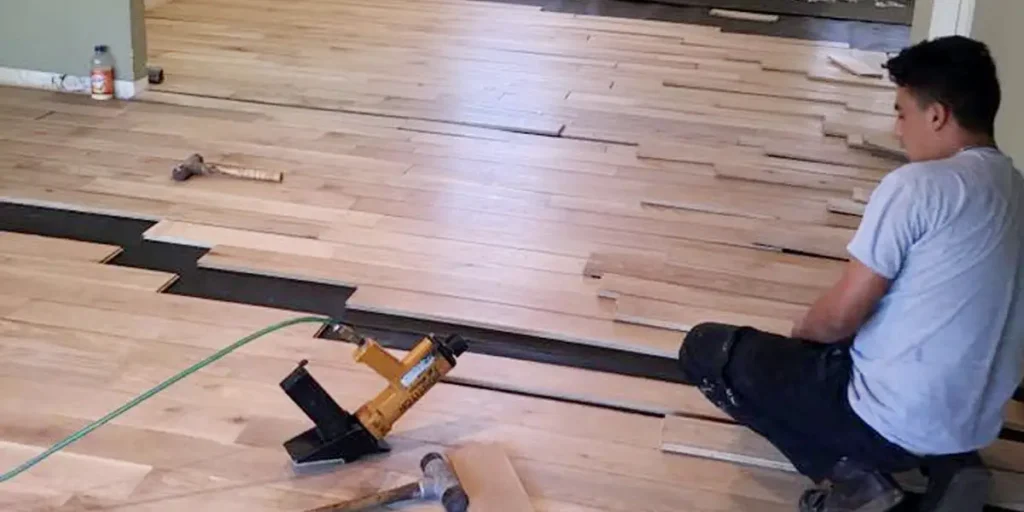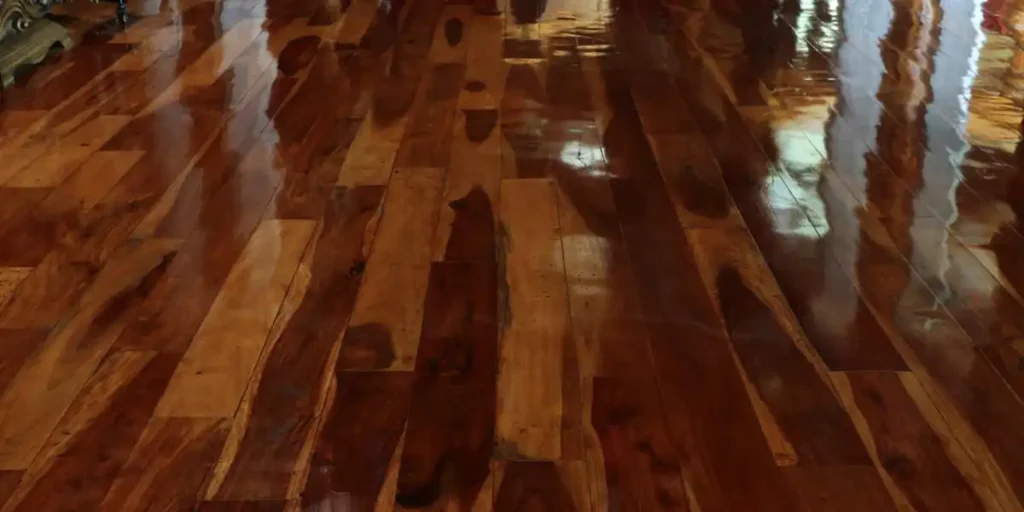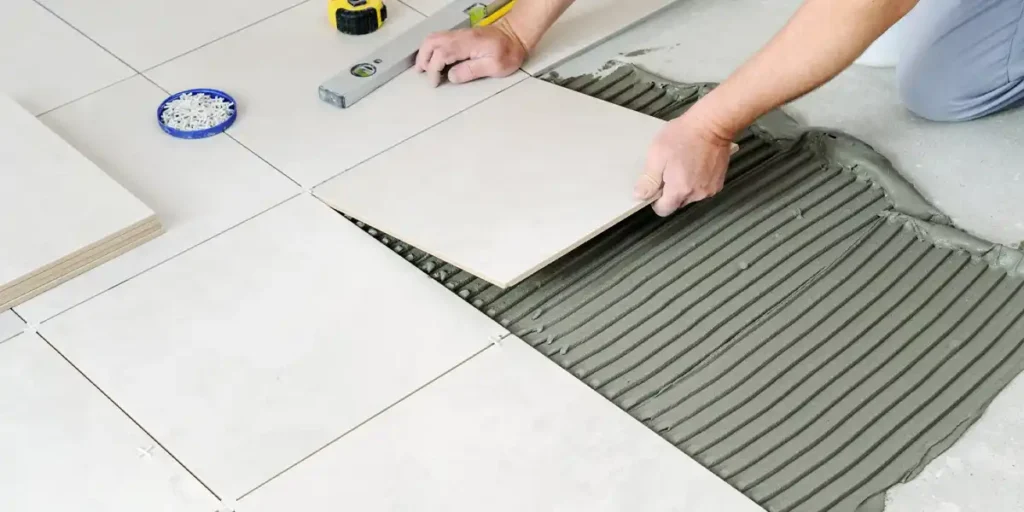So, you’ve chosen a Lifeproof flooring smart choice! Known for its resilience and aesthetic appeal, Lifeproof flooring is an excellent option for homeowners who want both beauty and durability.
But now you’re left staring at boxes of planks, wondering if you’ve bitten off more than you can chew. Fear not! Installing Lifeproof flooring is a manageable DIY project with the right guidance.
This expert guide will walk you through the process step-by-step, ensuring you achieve a stunning, long-lasting finish without the headaches. Let’s get started!
Preparing for Lifeproof Flooring Installation: Laying the Groundwork
The key to a successful installation lies in the preparation. Skipping these steps can lead to uneven floors, unnecessary stress, and costly repairs down the line.
1. Subfloor Assessment: The Foundation of Success
Your subfloor must be stable, clean, and level. Uneven surfaces can lead to a poor finish, with gaps, creaks, or visible imperfections.
- Inspect: Check for cracks, bumps, or loose areas.
- Repair: Use a self-leveling compound to address significant imperfections.
- Clean: Remove all dirt, debris, and adhesive residue to ensure proper plank adhesion.
2. Acclimation is Key: Letting the Flooring Breathe
Lifeproof flooring needs to acclimate to the room’s environment.
- Why it matters: This helps the planks adjust to the room’s temperature and humidity, preventing buckling or gapping after installation.
- How to do it: Leave the unopened boxes in the installation room for at least 48 hours.
3. Gathering Your Tools: Arming Yourself for the Job
Having the right tools on hand will streamline the process. Gather the following:
- Measuring tape
- Utility knife
- Spacers
- Tapping block
- Pull bar
- Underlayment (if needed)
- Safety gear: gloves and goggles
The Installation Process: A Step-by-Step Guide to How to Install Lifeproof Flooring
1. Laying the First Row
Start in a corner of the room, aligning the first row of planks with spacers to maintain an expansion gap around the walls.
- Pro Tip: Work parallel to the longest wall for a visually appealing layout.
- Be precise: Ensure the first row is straight, as it sets the foundation for the entire installation.
2. Row-by-Row Installation
Interlock the planks using the click-and-lock mechanism.
- Use a tapping block and pull bar: Ensure each plank fits snugly into place without damaging the edges.
- Check alignment frequently: Misaligned planks can create gaps and compromise the overall appearance.
3. Navigating Obstacles
Measure and cut planks to fit around doorways, pipes, or other fixtures.
- Tools to use: A sharp utility knife or jigsaw for clean, precise cuts.
- Pro Tip: Save scrap pieces for small sections or tricky areas.
4. Finishing Touches
Once all planks are in place:
- Remove spacers.
- Install baseboards and transition strips to cover expansion gaps.
- Inspect for any loose planks or uneven areas.
Maintaining Your Lifeproof Flooring: Keeping it Pristine
A durable floor like Lifeproof requires minimal but consistent care.
- Regular cleaning: Sweep or vacuum to remove dirt and debris.
- Mopping: Use a damp mop with a pH-neutral cleaner; avoid soaking the floor.
- Avoid abrasives: Steer clear of harsh chemicals and scrubbers that can damage the finish.
Final Words
Lifeproof flooring combines beauty, durability, and ease of maintenance, making it a popular choice for modern homes. By following these detailed steps and prioritizing preparation, you can transform your space with a flawless, long-lasting floor. Whether you’re a seasoned DIY enthusiast or a beginner, this guide ensures your Lifeproof flooring installation is a success. So, roll up your sleeves, grab your tools, and create a floor that stands the test of time!
Upgrade your space with expertly installed Lifeproof flooring! Let Cardenas Flooring bring durability and style to your home. Contact us today for a free consultation.
FAQs
What tools are required for Lifeproof flooring installation?
Essential tools include a measuring tape, utility knife, tapping block, pull bar, spacers, and a rubber mallet. Depending on your space, you may also need a jigsaw for precise cuts around door frames or pipes. If installing over concrete, a moisture barrier or underlayment may be necessary. Refer to the manufacturer’s instructions for any specific tools required for your flooring type.
Can Lifeproof flooring handle heavy furniture or appliances?
Yes, Lifeproof flooring is designed to support heavy furniture and appliances. To prevent scratches or dents, use protective pads under furniture legs and avoid dragging items across the floor. When moving appliances, place them on sliders or a protective sheet to minimize stress on the flooring surface.
What happens if a plank gets damaged after installation?
If a plank is damaged, it can be replaced without removing the entire floor. Use the pull bar to carefully remove surrounding planks until you reach the damaged one. Replace it with a new plank and reassemble the floor. Always keep extra planks from your initial purchase for such repairs.
Can Lifeproof flooring be installed in areas with extreme temperature changes?
Lifeproof flooring is designed to withstand temperature fluctuations but should not be installed in unheated spaces or areas with consistent temperature extremes. Acclimate the flooring to the room’s temperature for at least 48 hours before installation to prevent expansion or contraction issues. Always leave an expansion gap around the room’s perimeter.
Is underlayment necessary for Lifeproof flooring?
Underlayment may not always be necessary, as some Lifeproof flooring comes with a pre-attached underlayment. However, in cases of uneven subfloors or installations over concrete, an additional underlayment may be recommended to provide cushioning, soundproofing, and moisture resistance. Check the manufacturer’s guidelines for specific recommendations.




